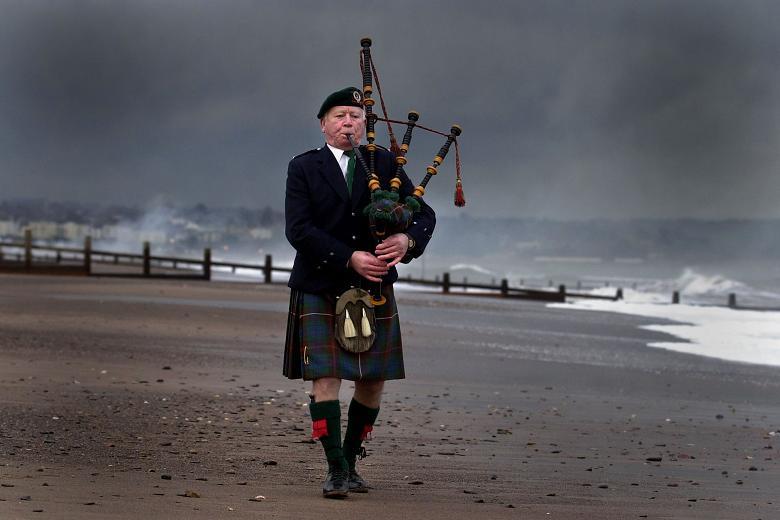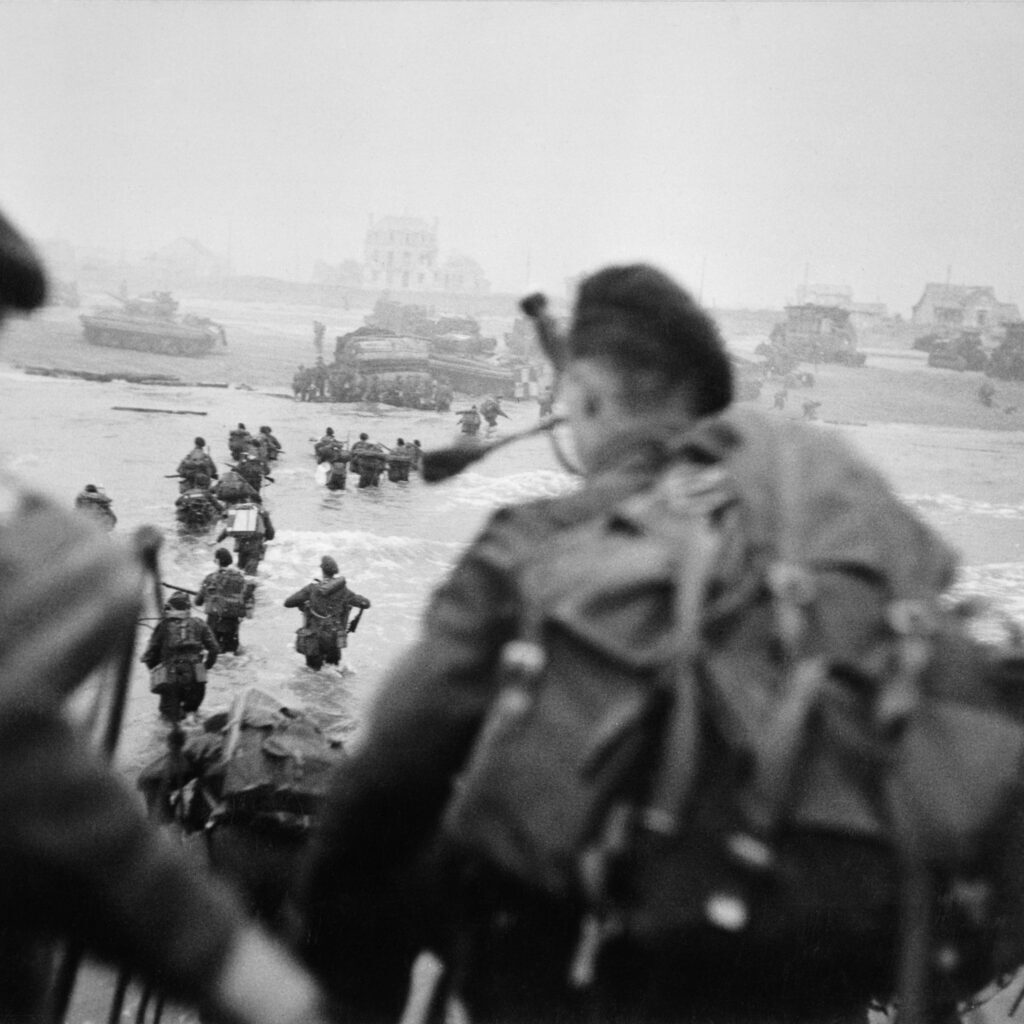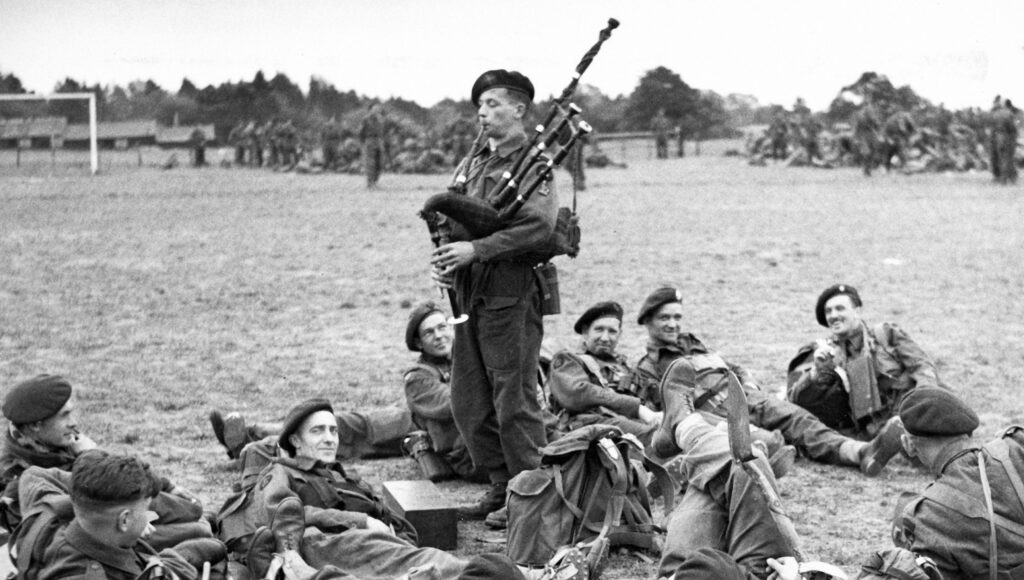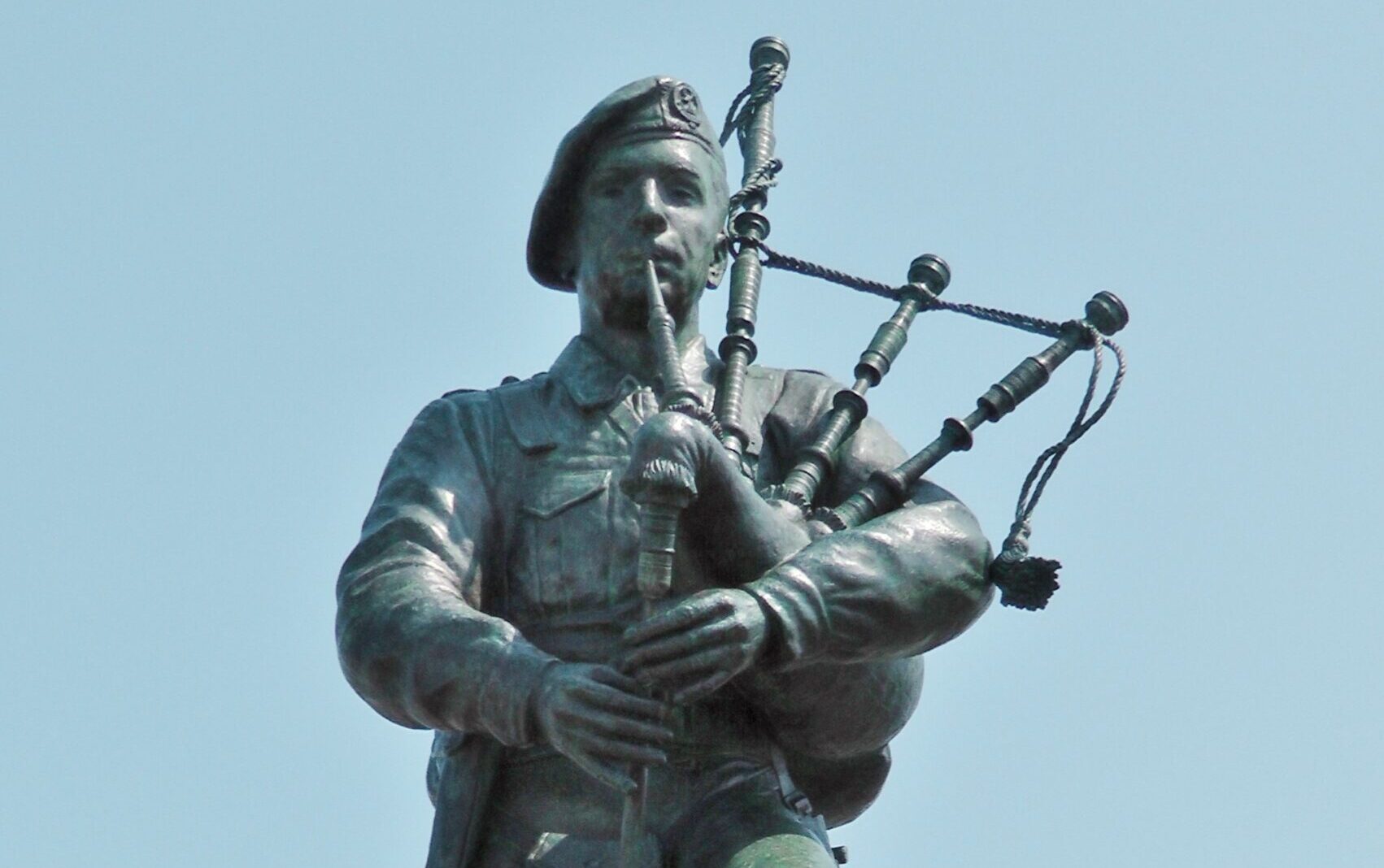On June 6, 1944, the Allied forces launched Operation Overlord, the largest and most complex amphibious landing in history until that point. Invading Hitler’s Fortress Europe was no small matter, even with all the preparations and forethought Allied planners made in advance of the landings.

In the years and decades that followed, D-Day became one of the most thoroughly studied and documented events of World War II. Still, it seems like more and more personal stories, fascinating accounts, and even urban legends from the invasion emerge every day.
Only those who were there can really know what it was like to hit the beach that day. But given recollections from veterans, photos and film reel taken that day, and Steven Spielberg‘s realistic depiction of the event in the 1998 film “Saving Private Ryan,” we have a pretty good idea of what it looked like.
Legend of the Scottish Soldier
So it’s all the more shocking to hear the legend of the Scottish soldier who walked up and down Sword Beach playing the bagpipes – and survived.
The truth is that it really happened. As the sounds of artillery exploded around them, as bullets whizzed by and the general din of combat echoed all around him, Private Bill Millin of the British 1st Special Service Brigade filled the air with the sounds of his bagpipes.
Millin landed on Sword Beach at 08.20 local time and waded to shore as his fellow commandos fell to the heavy machine-gun fire from the defenders’ many pillboxes. The 21-year-old private, wearing a ceremonial dagger and his father’s World War I-era kilt, pulled out his pipes while he was still in waist-deep water.

He serenaded an assault force made up of British troops, along with Free French Forces, Polish and Norwegian troops, with a stirring rendition of Hielan’ Laddie, a regimental march but also a popular Scottish folk song.
The private wasn’t crazy or eccentric; he was acting on orders. They were illegal orders, but those were his orders nonetheless.

Bagpipers being used in combat had been banned during World War II, as the pipers used in World War I suffered an astronomically high casualty rate. They made themselves easy targets in the trenches of the First World War, with the sound giving away their positions.
Millin’s commanding officer was Brig. Gen. Simon Fraser, Chief of the Clan Fraser and the 15th Lord Lovat. Knowing Pvt. Millin had been a bagpiper since the age of 12 and was in his outfit; Fraser appointed the young man as his personal piper. He ordered Millin to play the pipes for landing forces.
When he pointed out that bagpipers were forbidden by British Army regulations, Fraser wrote off the regs, telling Millin, “Ah, but that’s the English War Office. You and I are both Scottish, and that doesn’t apply.”
Bagpipes Saved Scottish Soldier’s life
For the troops in the landing craft, the bagpiper’s music was what we would call a “Force Multiplier” these days. Morale among the men was lifted along with their spirits, and for Millin, it allowed him to concentrate on something other than the seasickness and death that swirled around him on the beach.
As Millin played, bullets seemed to go right around him, his fellow troops waved him on, and the legend of the “Mad Piper of Normandy” was born.

It was those bagpipes that likely saved his life. An estimated 4,400 Allied troops fell on the beaches of Normandy on D-Day, but Millin walked away physically unharmed. Pvt. Millin continued to play the pipes as the combined force took the beach and began to move inland, stopping only a handful of times.
As his unit moved, they were decimated by German sniper fire. When asked why they didn’t target the piper after the battle, German snipers said they didn’t shoot him because they thought he was either insane or an idiot.
Scottish soldier played throughout the day on June 6, as his unit moved to link up with British paratroopers who had landed earlier in the evening. Millin continued to play into the following day but was forced to stop when shrapnel tore through the instrument. He would find another set of pipes later in the war and play those until they were damaged too.
Millin lived to see the end of the war and donated both sets of pipes to museums. He lived until the age of 88. Complications from a stroke finally took down “the Mad Piper” in 2010.
Read About Other Military Myths and Legends
If you enjoyed learning about the Scottish Soldier, we invite you to read about other military myths and legends on our blog. You will also find military book reviews, veterans’ service reflections, famous military units and more on the TogetherWeServed.com blog. If you are a veteran, find your military buddies, view historic boot camp photos, build a printable military service plaque, and more on TogetherWeServed.com today.

Well done, Billy Boy!